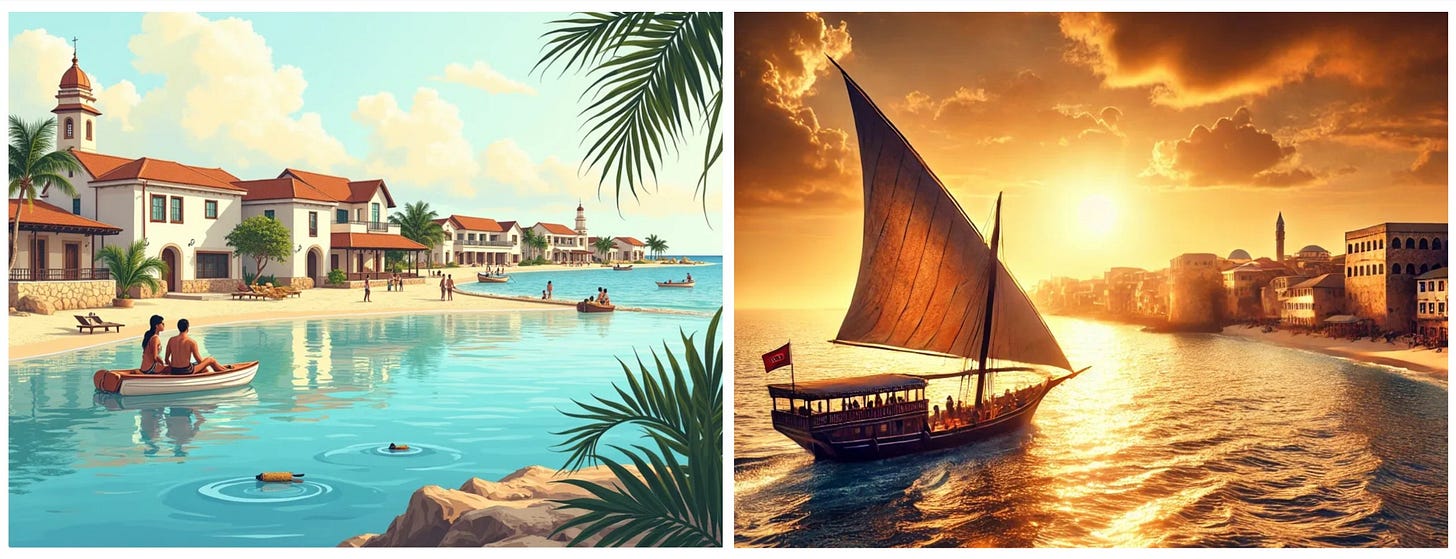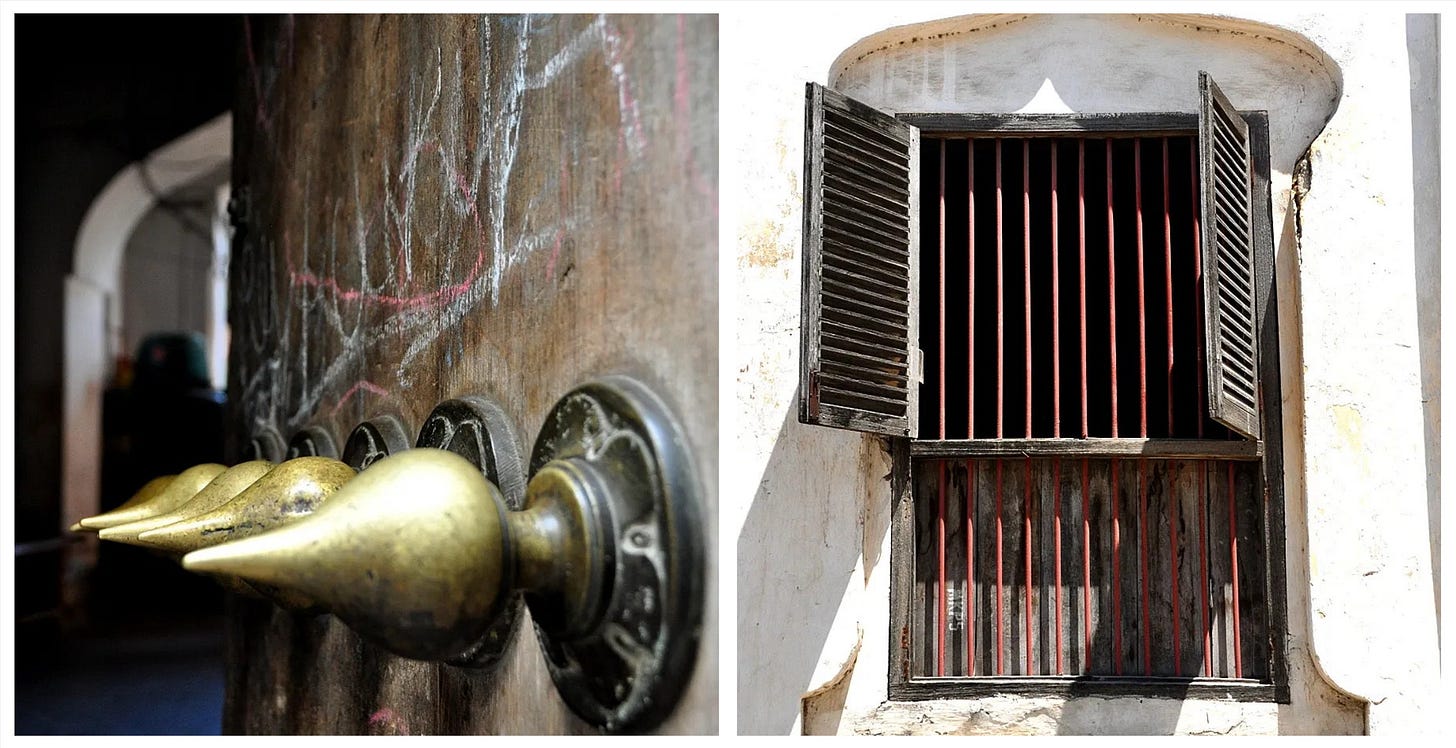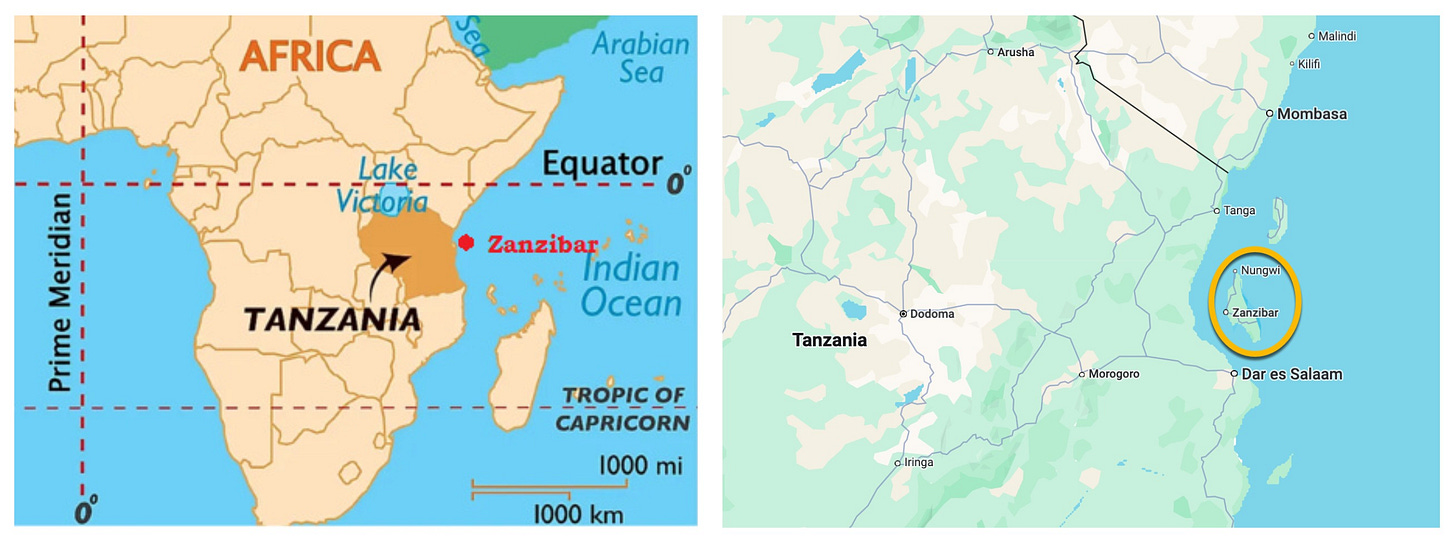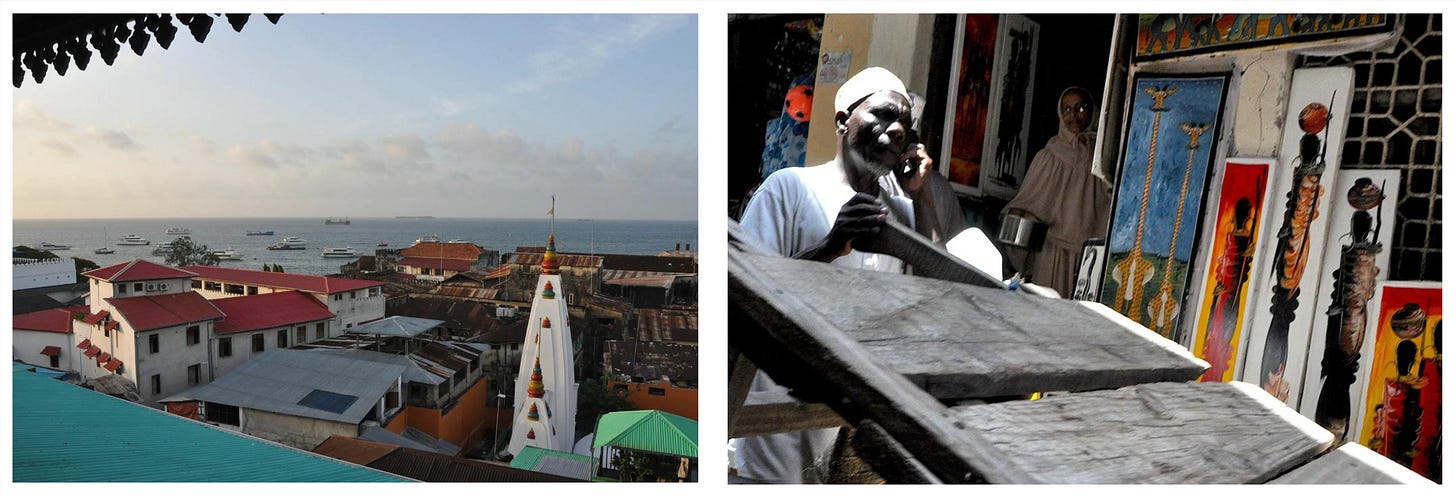Spicy times in Zanzibar
Sultans and slaves, spice traders and explorers; they all left a complex historical and culinary legacy on this exotic East African island.
We had come to the island for rest and relaxation. A month earlier we arrived in Cape Town, South Africa. After that we took the Blue Train to Johannesburg. Then a safari in Tanzania. We climbed Kilimanjaro, taking the slow route. Now Zanzibar.
The very name of this island conjures images of exotic spices, white beaches, and dhows tacking on trade winds that have blown traders and slavers from Arabia and India to this eastern edge of Africa. But as it turned out, rest was hard to come by, I’m glad to say.
In historic Stone Town, the sultry air moves like molasses, thick with the perfume of cloves and whispers of centuries. Here, in the labyrinthine heart of Zanzibar's UNESCO protected quarter, time isn't measured by clocks but by the 5 daily calls to prayer that float across the rusted iron rooftops. On street level, the scent of cardamom-spiced coffee brewing in battered copper pots is hard to miss. And even harder to resist.
This archipelago off Tanzania's coast has long been a commercial crossroads. The result is a cosmopolitan heritage that's evident in everything from the brass-studded doors—carved with intricate Swahili patterns and Indian lotus flowers—to the evening food market at Forodhani Gardens, where Persian-influenced kebabs sizzle alongside Bantu coconut curry.
"Each stone in our walls could tell you a different story," says Malik, our guide through Stone Town's narrow alleys. He points to the weathered coral stone buildings, their balconies adorned with ornate wooden fretwork. These structures once housed sultans and slaves, spice traders and explorers, all playing their part in Zanzibar's complex historical legacy.
The island's storied history is as layered as its architecture. Portuguese conquistadors, Omani sultans, and British colonials all left their mark, but it's the spice trade that truly shaped Zanzibar's identity.
By the 19th century, the island had become the world's largest clove producer, earning its nickname ‘Spice Island’. Under Omani rule, Zanzibar became the world’s largest producer of cloves. The Sultan of Oman, recognising the island’s potential, moved his capital from Muscat to Zanzibar in 1840, ushering in an era of unprecedented prosperity.
Today, spice farm tours take you deep into groves of cinnamon trees growing alongside vanilla vines; where nutmeg trees heavy with fruit, all point to a trade that once made this island wealthy beyond measure.

Human trafficking also contributed to that wealth. For centuries, Zanzibar was the nexus of the Indian Ocean trade network, and one of the island’s most infamous commodities was slaves. The legacy of this dark chapter is preserved in Stone Town’s Anglican Cathedral, built between 1873-1887 on the former slave market after slavery was abolished. Its altar stands where the whipping post once was. The building combines Gothic and Arabic styles, using local coral stone. Below the church, original slave chambers remain accessible, while outside stands a sobering memorial sculpture of chained slaves.
Yet one of Zanzibar's most famous exports wasn't a spice or a slave, but a voice. Freddie Mercury, born Farrokh Bulsara in Stone Town's Shangani neighbourhood, spent his early years here before destiny had other ideas. While several cafes around town claim ‘Freddy ate here’, a nondescript museum commemorating their famous son opened in 2019. It’s housed in a traditional Zanzibari building near one of the musician’s childhood homes. It was closed when we passed by. Crowd-sourced reviews suggest it’s best appreciated by diehard fans only with its limited original artefacts, faded photo reproductions and information panels.
Away from Stone Town's bustling historic quarters, Zanzibar unfolds at a more measured pace. Along the east coast at low tide, women in bright kangas wade through shallow waters harvesting seaweed destined for export to international cosmetics companies; the continuation of which is under threat due to fluctuating sea levels.
Further south, in villages like Jambiani, fishermen still build dhows using techniques passed down through generations. These ancient, iconic sailing vessels, with their distinctive triangular sails, have plied these waters since the time of the pharaohs.
A different type of ‘sail cloth’ plies the waters off the island's northern tip where trade winds blow with persistence and power: kite surfers. Tethered to coloured ‘handkerchiefs’ they dart and jump and criss-cross the shallow turquoise waters like swarms of water-borne insects.
In Nungwi, the rest we originally sought showed signs of happening. Here, resort life mingles with local tradition. You're as likely to find yourself dining on fresh lobster at a five-star sanctuary of luxury as you are sharing grilled octopus and coconut bread with locals at a beach bonfire. We indulged in both dining experiences.
But it's the evening transformation of Stone Town that perhaps best captures Zanzibar's essence. At the going down of the sun, the old city seems to exhale as the heat of the day dissipates. At Forodhani Gardens, you eat street food and drink sugarcane juice. You stand, with skewered seafood in hand, and take in the air, along with the fused sounds of Taarab music, a uniquely Zanzibari blend of African rhythms, Arabic scales, and Indian harmonies. So that’s where’s Freddy’s melodies might have taken root?
Yes, we were rested. But what does that mean? It’s to be refreshed; reinvigorated. Ready to press on. This is what Zanzibar can do. And you soon begin to understand this island isn't just a place with a rich but chequered past. To immerse yourself in the throng of Stone Town’s cultural melting pot is to be exposed to imaginary conversations between Persian traders, Omani princes, Indian merchants, and African warriors that's been ongoing for centuries.
And that is not restful. Rather, it’s rare and rejuvenating.








